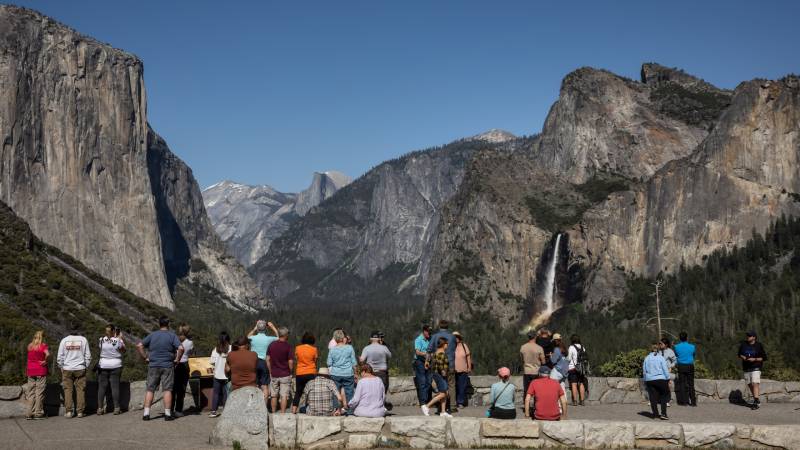The Trump administration’s budget and staffing cuts to national parks could mean longer lines, closed visitor centers and fewer search and rescue workers this summer, according to former parks staff and advocates. The cuts are also compromising scientific research and environmental protection, creating what the National Parks Conservation Association calls “a façade of a national park experience.” In California, Yosemite scientists have had to pick up bathroom cleaning shifts; decades-long endangered species studies in the Channel Islands are at risk. Are you planning a visit? We’ll share what you should know before you go.
Yosemite and Other CA National Parks Underfunded, Understaffed this Summer

Guests:
Russell Galipeau, executive council member, Coalition to Protect America’s National Parks; former superintendent, Channel Islands National Park
Ashley Harrell, National Parks Bureau Chief, SFGATE
Neal Desai, Pacific Region director, National Parks Conservation Association
Show Highlights
Severe Resource Shortfalls
Budget cuts and staffing reductions have left the National Park Service seriously under-resourced. According to former Channel Islands superintendent Russell Galipeau, sequestration cuts in the early 2000s already trimmed budgets and personnel by roughly 20% before his 2018 retirement.
Today, Ashley Harrell reports that about 13% of employees have left since January—through layoffs, rescinded offers, resignations, and retirements—and that more departures are being encouraged.
Visitor Frustration and Economic Fallout
With fewer rangers and staff, visitors face longer lines, closed centers, and scaled-back programs. Neal Desai of the National Parks Conservation Association warns that core protection functions like wildlife stewardship, research, and educational outreach are being sidelined simply because there aren’t enough boots on the ground.
Local businesses are feeling the pinch too: in Groveland, a hotel owner reported almost no bookings for June and July, a phenomenon he’d never seen before.
Rangers Pushed to the Brink
Cuts have forced rangers into impossible multitasking—trading field biology for front-desk duty, and even taking on second or third jobs. One caller shares that her daughter, a new bilingual ranger on Alcatraz Island, is working three roles and logging relentless overtime just to keep basic programs afloat. Burnout is rampant as staff strive to meet public demand with dwindling resources.
Threats to Science and Conservation
Perhaps most alarming is the erosion of scientific and environmental protection efforts. Recovery of iconic species—like the California condor and Channel Islands fox—require dedicated biologists; now, those specialists are routinely reassigned to visitor services. The parks’ very ecosystems and archaeological treasures are losing the expert attention they need.
Political Motives and Future Uncertainty
Critics accuse the administration of misunderstanding—or deliberately undermining—the parks’ mission. Desai worries that proposals to transfer parks to state or private control threaten the parks’ integrity.
Harrell notes that Interior Secretary Doug Burgum’s call for visitors to report “partisan” or inaccurate histories reads like censorship; Desai warns it tells staff to sanitize their stories. With four years of the current administration remaining, conservationists fear lasting harm to our parks’ heritage and ecosystems.
A Call to Action
Despite these challenges, former and current park staff urge the public to stay engaged. Galipeau encourages everyone to “go visit your national parks” and remind Congress why these sites matter. Desai adds that volunteering, speaking up, and lobbying lawmakers are vital steps anyone can take. Harrell emphasizes the importance of public awareness. “We’re just trying to do the best job we can—figuring out what’s going on and telling people about it,” he says.
This content was edited by the Forum production team but was generated with the help of AI.